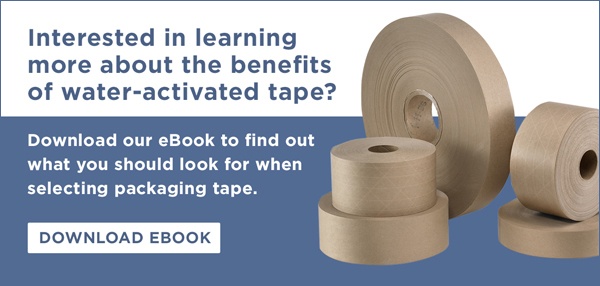Moving Tape
When packing for storage or a big move, be sure to reach for moving tape. You want to seal your cartons with a tape that is:
- ✔ tamper evident
- ✔ easy to remove from the carton
- ✔ able to withstand hot and dusty environments
These qualities will ensure that even when moved to several sites, your belongings will be safe yet easily accessible when needed. Some tapes can’t withstand the elements during the moving process and may lose adhesion and result in ruined or damaged belongings. So choose carefully! An effective moving tape should keep your cartons closed until they arrive at your destination.
Shipping Tape
Shipping tape needs to have all the qualities of moving tape and more. It needs to be:
- ✔ tamper evident
- ✔ able to withstand hot and dusty environments
- ✔ able to withstand the rigors of transportation and the shipping process
- ✔ easy to apply, especially for companies with a high shipping volume
- ✔ branded and professional looking throughout the entire delivery process
When customers purchase items for home or business delivery, they expect those products to arrive at their door with the carton intact and looking professional. The shipping tape must provide a secure bond with a tamper-evident seal. You want a tape that is challenging to remove from the carton, which helps prevent theft. When researching the most effective shipping tape, companies need to consider their application and decide what attributes are most important.
Our Recommendation:
Water-Activated Tape
To make the decision process easy and to ensure that you have a fail-proof solution, we recommend using water-activated tape, or WAT, for your moving and shipping needs. This type of tape is an ideal choice for both moving and shipping purposes.
Also known as paper tape or gummed tape, WAT is made primarily of white or natural color Kraft paper tape and starch-based adhesive. It is available as plain paper tape or it can be purchased with reinforced fiberglass fibers.
When the tape’s adhesive is activated with water, it penetrates the carton material and the tape forms a permanent bond with the corrugated carton.
Non-reinforced water-activated tape provides a strong, tamper evident seal. However, it is easy to remove, making this perfect for moving situations.
Reinforced water-activated tape has the same characteristics as the non-reinforced Kraft paper tape, but the fiberglass reinforcement makes it extremely strong and appropriate for the rigors of shipping. Reinforced water-activated is ideal for shipping heavy and bulky items, when extra carton strength is often needed.
For shipping, pre-printed gummed paper tape can be used to display a business logo or branded message, enhancing the customer delight and professionalism of the shipment.
Also known as paper tape or gummed tape, WAT is made primarily of white or natural color Kraft paper tape and starch-based adhesive. It is available as plain paper tape or it can be purchased with reinforced fiberglass fibers.
When the tape’s adhesive is activated with water, it penetrates the carton material and the tape forms a permanent bond with the corrugated carton.
Non-reinforced water-activated tape provides a strong, tamper evident seal. However, it is easy to remove, making this perfect for moving situations.
Reinforced water-activated tape has the same characteristics as the non-reinforced Kraft paper tape, but the fiberglass reinforcement makes it extremely strong and appropriate for the rigors of shipping. Reinforced water-activated is ideal for shipping heavy and bulky items, when extra carton strength is often needed.
For shipping, pre-printed gummed paper tape can be used to display a business logo or branded message, enhancing the customer delight and professionalism of the shipment.
Grab a Sample!
Want to see for yourself how water activated tape can work for your moving or shipping needs? Request a free sample of our carton-sealing tape below.

[This post republished from the Better Packages Blog]

















